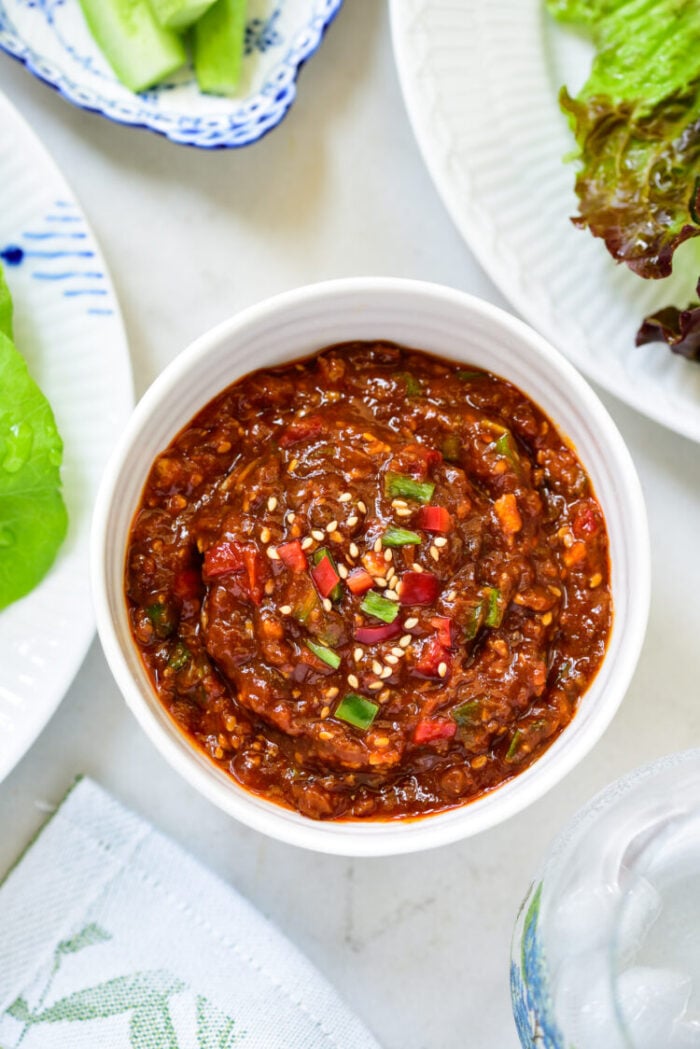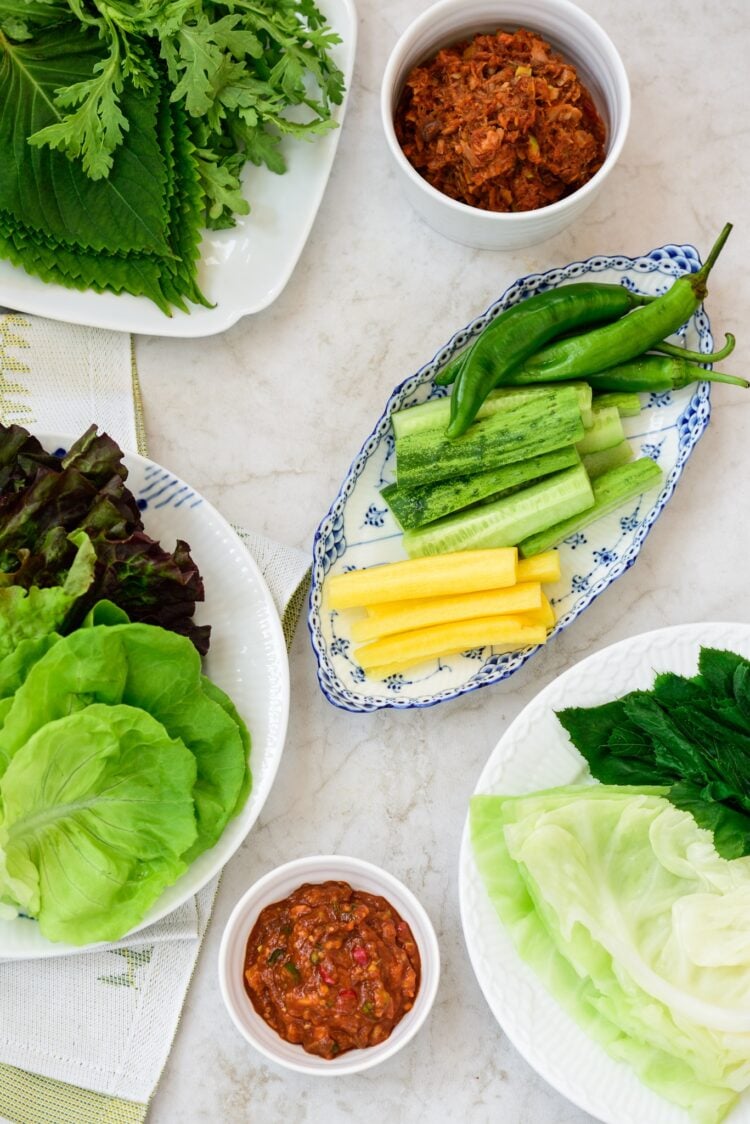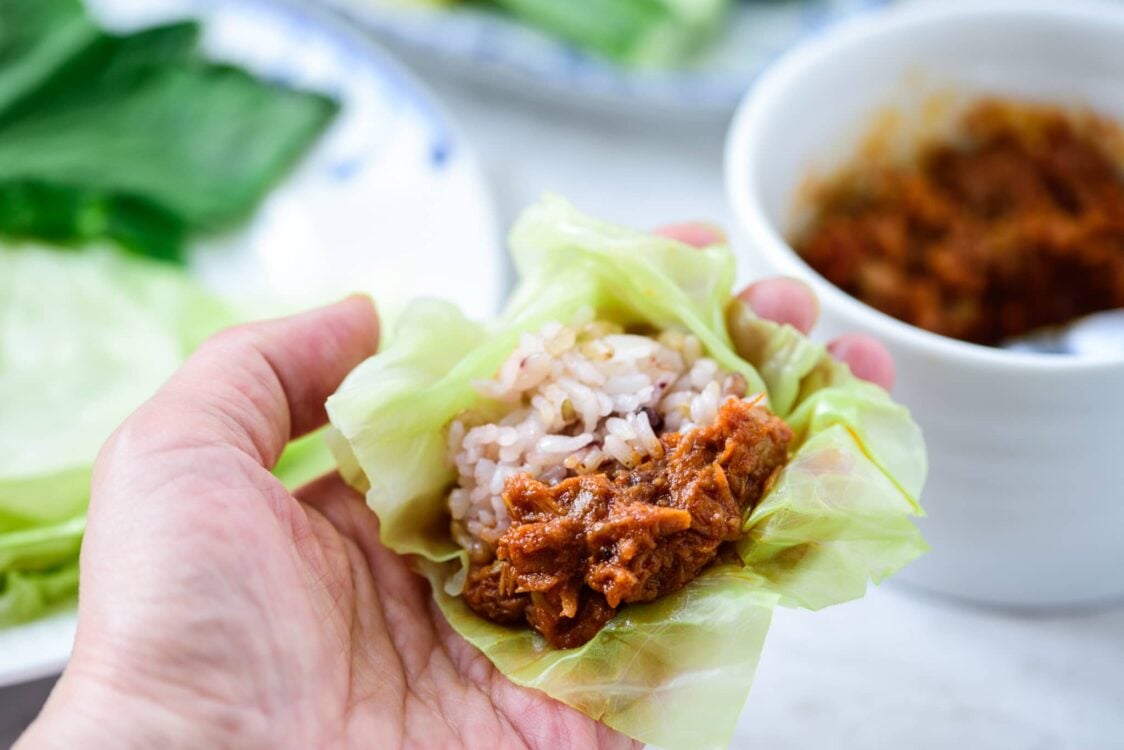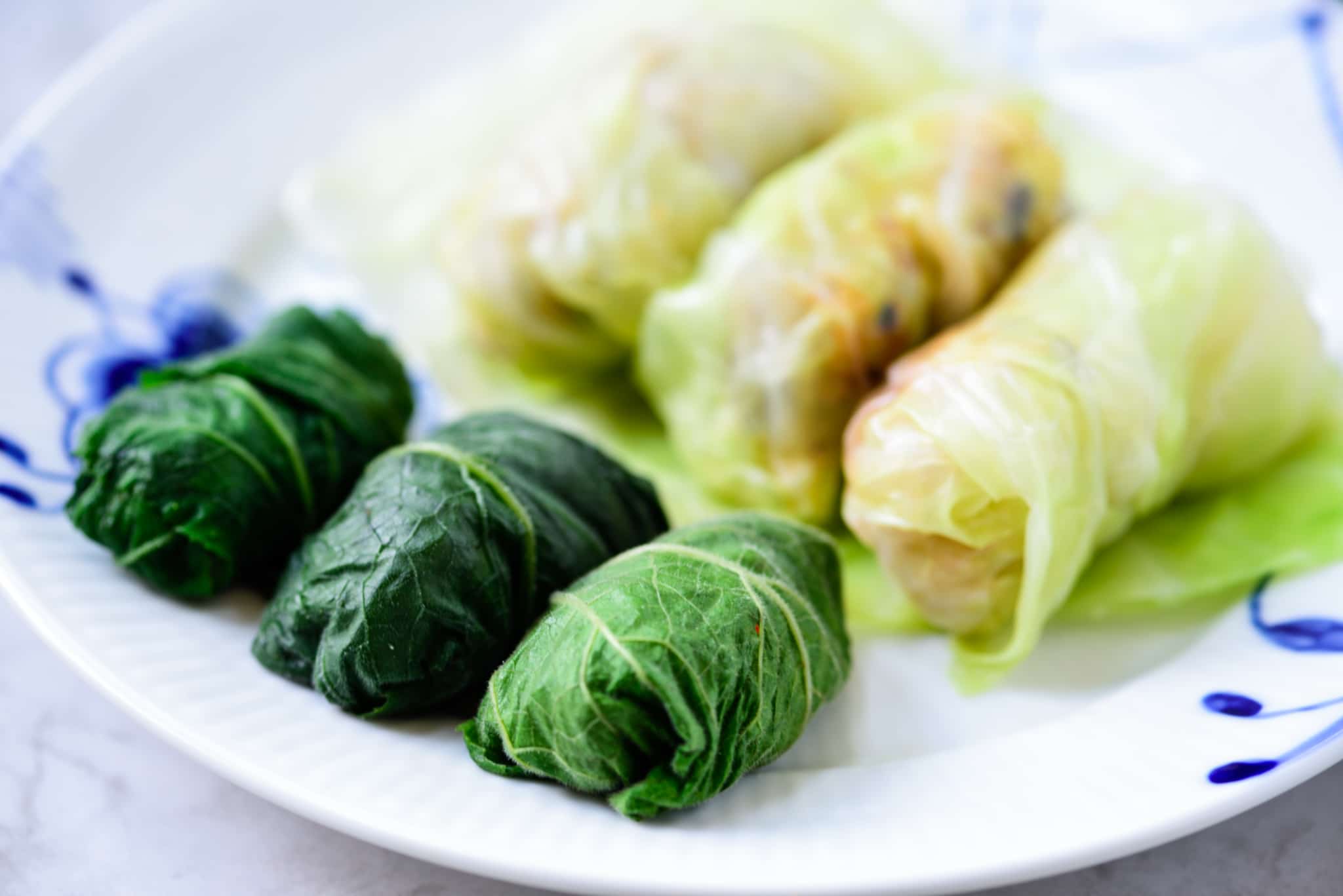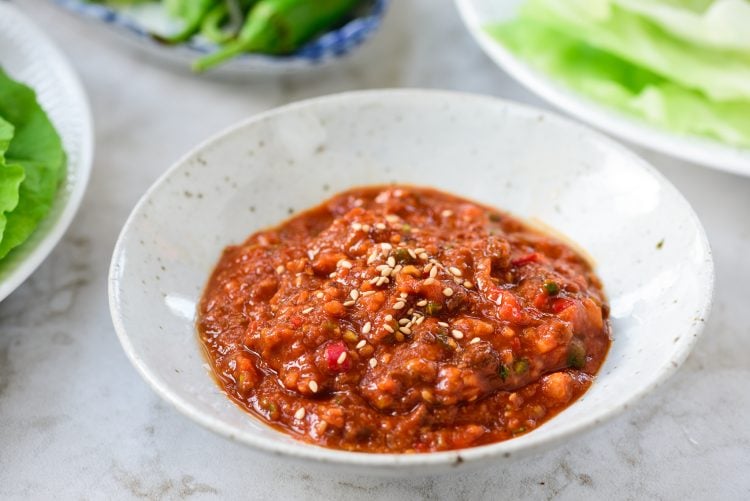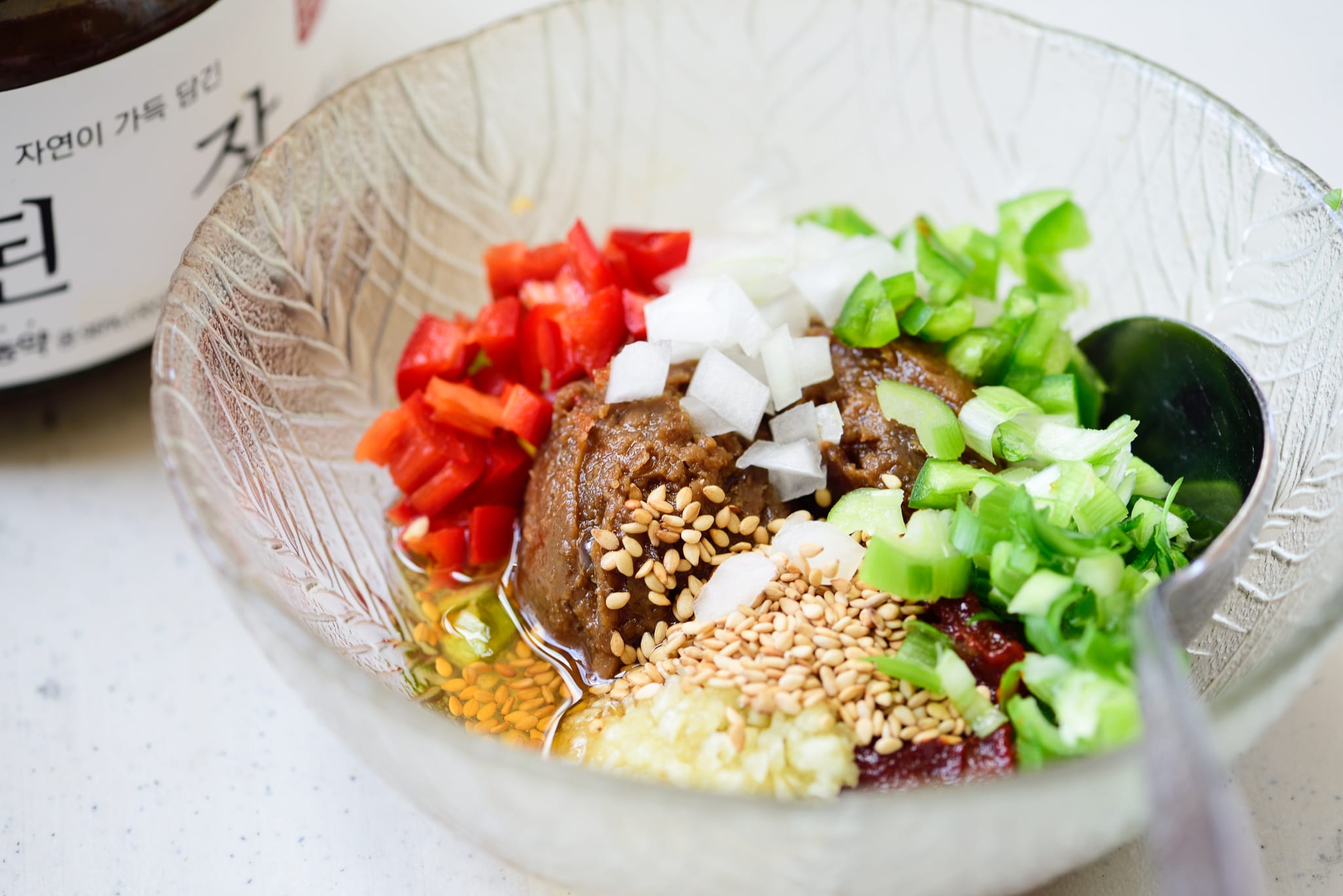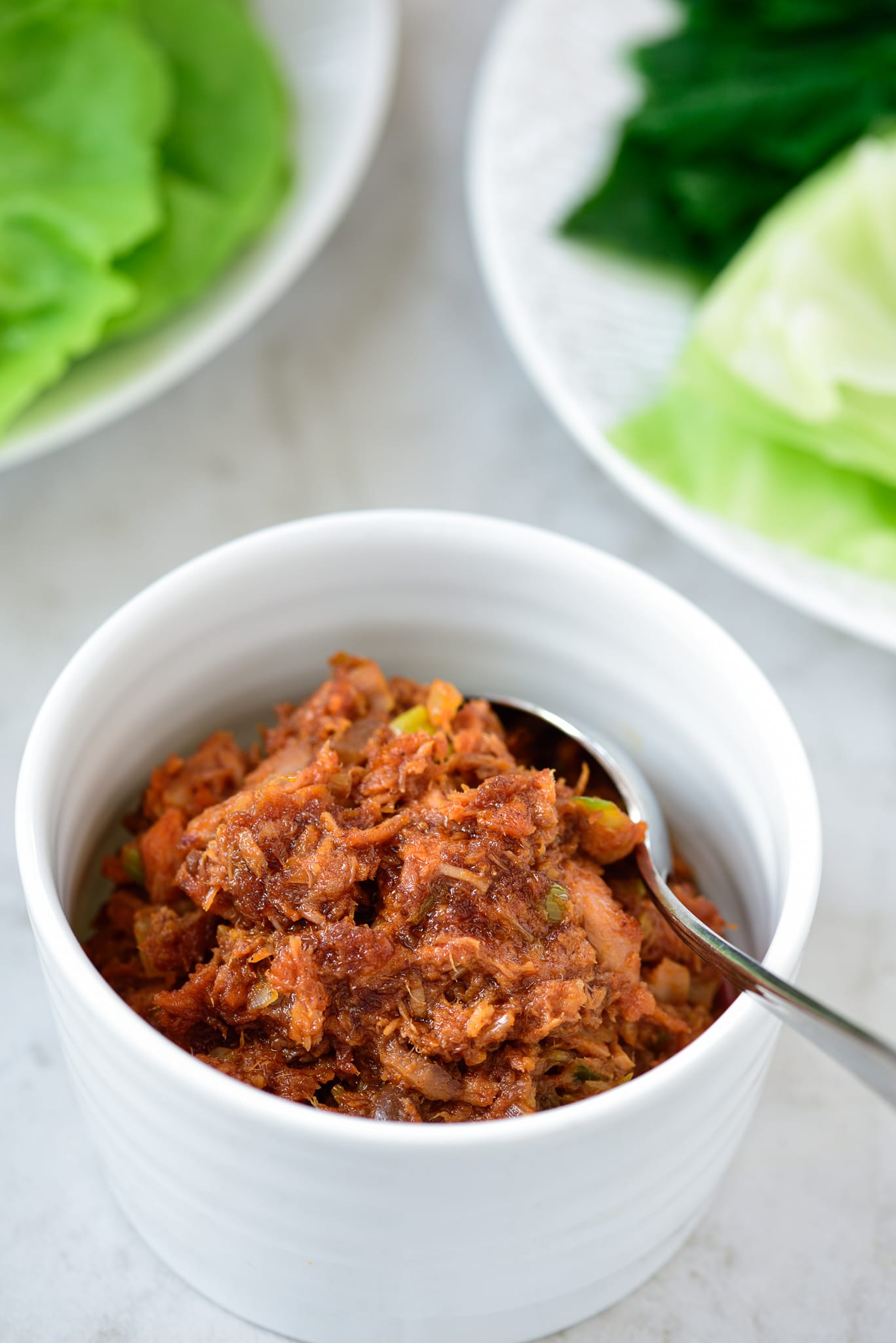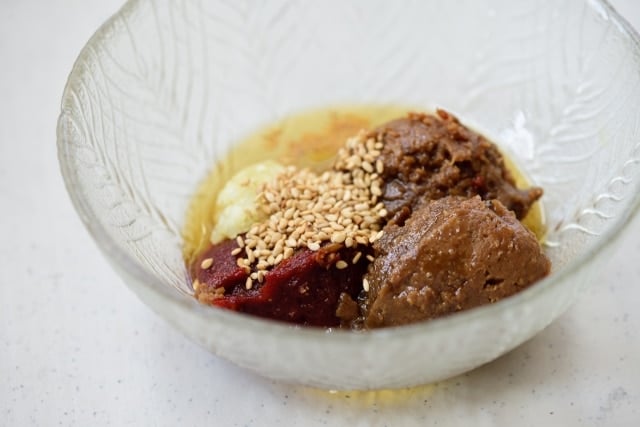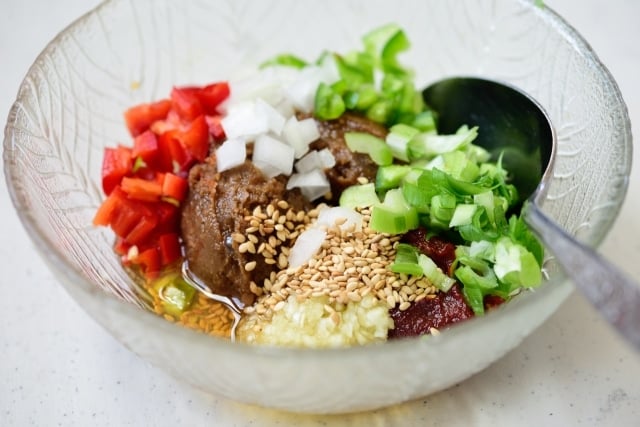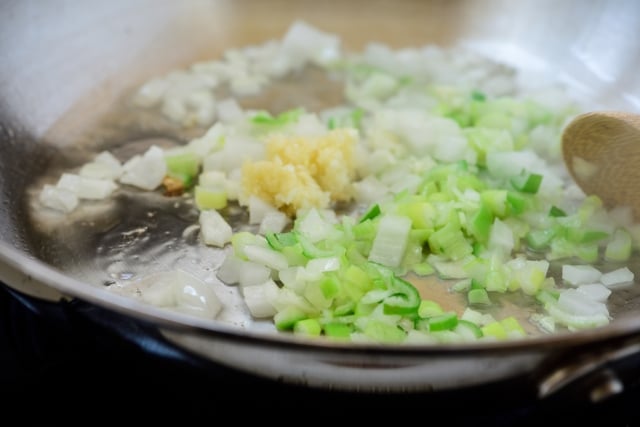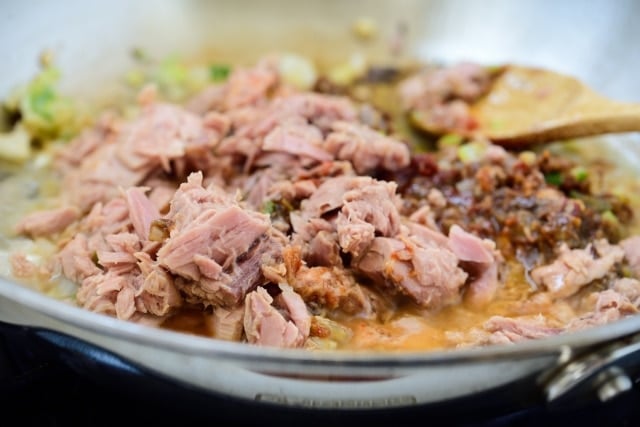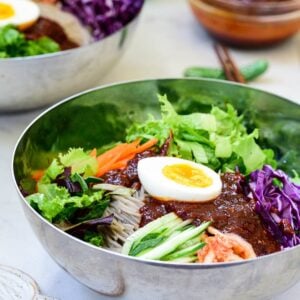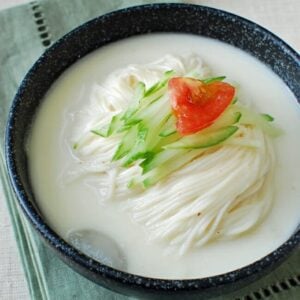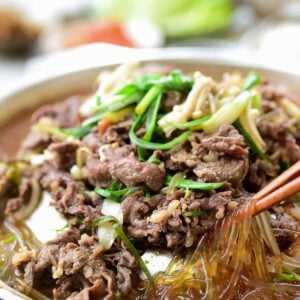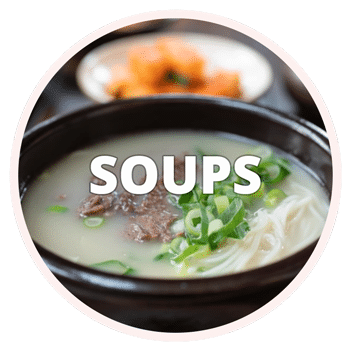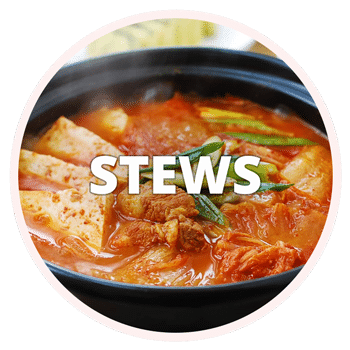Ssamjang is a Korean sauce for lettuce wraps. Learn how to make a basic ssam sauce and a variation made with canned tuna.
What is ssamjang?
Ssamjang (쌈장) is best known as a dipping sauce that accompanies lettuce wraps for Korean BBQ. In food terms, ssam (쌈) means wraps or wrapped food, and jang (장) is a collective term for Korean fermented condiments, such as doenjang, gochujang and ganjang.
Technically, ssamjang is any sauce that’s used for ssam. While there are many different types, it’s typically made with doenjang and/or gochujang and some other ingredients. The mixture is primarily used at the table as a sauce for vegetable wraps or as a dipping sauce for fresh vegetables such as cucumbers, carrots, and chili peppers.
What is ssam?
As mentioned above, ssam refers to wraps or wrapped food. It’s a huge part of Korean food culture. We eat ssam all the time with or without BBQ meat. Historically, Koreans associated wrapped food with good fortune, and there are many different types of wrapped food. We normally use this type of sauce for vegetable wraps with all kinds of fresh and steamed/blanched vegetables.
Although lettuce varieties (sangchu, 상추) are most common, there’s an infinite number of vegetables Koreans use for ssam, sometimes depending on the regions. Perilla leaves, bean leaves, zucchini leaves, cabbages, and fresh sea vegetables (such as miyeok or dashima) are some of the common ones.
Growing up, steamed zucchini leaves (hobaknnip, 호박잎) were my summer favorite. My mother used to throw some in to the pot she was cooking rice in with the last couple of minutes remaining. My family also loves steamed/blanched green cabbages as wraps.
Often, we simply enjoy ssam with a spoonful of rice in it with a dollop of ssamjang. However, there’s no limit to what goes into a wrap. In addition to all the meat options, ssam is also delicious with braised fish, grilled fish, raw fish, canned fish, tofu, and so on.
Usually each person makes his/her own wraps at the table. You can also serve pre-wrapped ssambap by making ssam rolls with some rice and ssamjang in them.
Types of ssamjang
You can purchase pre-made ssamjang at Korean markets, usually stocked side by side with doenjang and gochujang. However, I’d recommend you spend your money on doenjang and guchujang, with which you can easily make fresh ssamjang any time and make many other Korean dishes.
As with most Korean dishes, there are probably as many ssamjang recipes as the number of Korean cooks. However, there are largely two types. The first type is made simply by mixing the ingredients, while the other type involves cooking the ingredients together.
How to make ssamjang
The most basic ssamjang is doenjang or gochujang itself. Commonly, ssamjang is a mixture of doenjang and gochujang. The ratio of the two is totally a matter of preference, but it’s usually more doenjang than gochujang. For a good balance of umami and heat, I usually use the ratio of 2:1.
What’s added to the mixture is wide open to the cooks as well.
For a quick version, I simply add sesame oil, sesame seeds, and some minced garlic, and mix with a bit of water or rice wine (or mirin) to thin it. Sometimes, I use a soft drink instead, if available.
If you want to go one step further, add finely chopped scallions, onion and/or chilli peppers. A bit of sugar, oligodang, or honey is also nice to balance out the saltiness of doenjang and gochujang.
Sometimes, I also mix in finely chopped nuts, such as almonds, walnuts, peanuts, and/or pine nuts. The addition of nuts gives ssamjang a nice nutty flavor while adding a crunchy texture.
How to make cooked ssamjang
Cooked ssamjang is also very popular in Korea. It’s a great way to put in protein and/or other vegetables to make the sauce more substantial and delicious. Plus, the resulting sauce tastes less salty, so you can use more for each wrap or dip.
To make it, you basically cook aromatic vegetables such as garlic, onion, and scallions and your choice of protein and/or other vegetables such as mushrooms, zucchini, etc. Then, stir in doenjang and gochujang. Canned tuna (chamchi 참치) and ground meat are popular protein choices. For vegan options, try tofu and/or mushrooms.
I’m showing both no-cook and cooked ssamjang recipes here and how you can vary each type.
For more Korean cooking inspirations, follow along on YouTube, Pinterest, Twitter, Facebook, and Instagram.
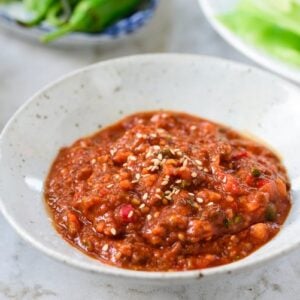
Ingredients
For basic ssamjang (no-cook)
- 2 tablespoons doenjang 된장 (Korean fermented soy bean paste)
- 1 tablespoon gochujang 고추장 (Korean red chili pepper paste)
- 1 teaspoon minced garlic
- 1/2 tablespoon sugar (or honey or oligodang) or to taste
- 2 teaspoons sesame oil
- 1 teaspoon sesame seeds
- 1 tablespoon water or rice wine to thin the sauce or use more for a desired thickness
Optional ingredients for no-cook ssamjang (use any or all of the listed ingredients)
- 1 tablespoon finely chopped onion
- 1 tablespoon finely chopped scallion
- 1/2 tablespoon finely chopped green chili pepper
- 1/2 tablespoon finely chopped red chili pepper
- 2 tablespoons chopped nuts (almonds, walnuts, peanuts, etc.)
For Tuna Ssamjang
- 1 can tuna (about 5 ounces) See note for other options
- 2 tablespoons finely chopped onion
- 2 tablespoons finely chopped scallion
- 2 teaspoons minced garlic
- 2 tablespoons doenjang 된장 (Korean fermented soy bean paste)
- 1 tablespoon gochujang 고추장 (Korean red chili pepper paste)
- 1 tablespoon sugar (or honey or oligodang)
- 1 tablespoon sesame oil
- 2 teaspoons sesame seeds
- 1 tablespoon cooking oil
Instructions
For basic ssamjang
- Combine all the ingredients and mix well until everything is well incorporated.
- If using optional ingredients, prepare the ingredients, combine and mix everything well.
For tuna ssamjang
- Preheat a small pan with a tablespoon of oil. Add the onion, scallion and garlic and stir fry until the onion is cooked.
- Add the tuna, doenjang, gochujang and the remaining ingredients. Stir well for a few minutes until everything is well incorporated. You can stir in some water or rice wine (or mirin) if the sauce seems dry (2 to 3 tablespoons).


